How Marvel’s latest cuts through the MCU trappings to deliver one of Spidey’s most personal stories yet.
Please note that this article contains MAJOR SPOILERS for Spider-Man: No Way Home.
If you consume enough Spider-Man stories, you start to notice the malleability of the character. The assorted movies, shows, video games, and comic books all have their different takes on the wall-crawler and can plausibly plop him into different settings and moods. But you’ll also witness the two central aspects of Peter Parker that unite the various versions of the character across eras and mediums: (1) he chooses to do good, even when it’s hard, because he knows it’s the right thing to do, and (2) he suffers mightily for it.
Amid that backdrop, Spider-Man: No Way Home aims to encompass a lot. It’s the culmination of the Jon Watts/Tom Holland interpretation of Peter Parker, and the journey through his high school years which began in Homecoming. It also has to service broader MCU connections to Doctor Strange (Benedict Cumberbatch) among other Easter eggs. It’s tasked with finding grace notes and meaningful moments for M.J. (Zendaya), Ned (Jacob Batalon), Happy (Jon Favreau), Flash (Tony Revolori), Aunt May (Marisa Tomei), and a host of other characters who’ve been major and minor parts of these movies. And if that weren’t enough, it brings back five villains, two heroes, one conspiratorial agitator, and scads of loose threads from the movies that preceded this Peter’s arrival.
And yet, what makes it work, what gives No Way Home a clarity and a balance previous oversized Spider-Man movies missed, is the way it’s built around those twin core facets of the character. Despite the multiversal stakes, the throughline remains Peter striving to live up to the values instilled in him by the people he loves, even when it’s the most difficult thing to do. And he endures tremendous losses, makes grand personal sacrifices, in the name of looking out for everyone but himself. It’s what bolsters this Spider-Man, and all Spider-Men, and elevates this tribute to (and triumph of) the character in all his cinematic forms, making it one of the Web-Head’s very best.
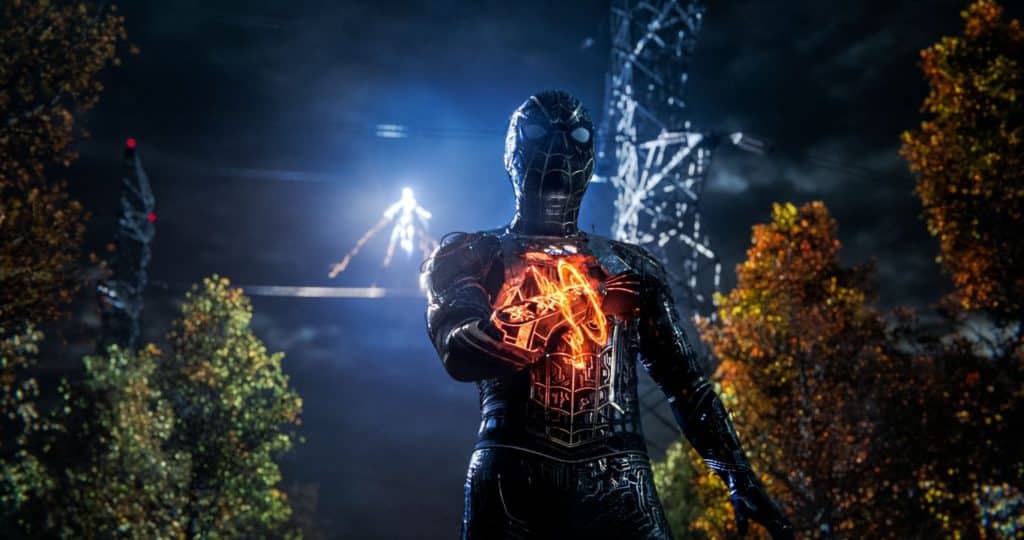
It helps that what starts these multi-dimensional problems is something smaller and more personal. So much of the MCU’s version of Spider-Man hinges on the sense of an overwhelmed kid trying to stand firm in the face of events bigger than he is. That holds here, as Peter Parker tripping the space-time continuum doesn’t come from battling cosmic beings or titans with reality-warping powers.
Instead, he’s simply upset that his best friends missed out on college after being tainted by association with him, that everyone near him was arrested and interrogated by law enforcement, that his mere existence as a superhero blew up his poor aunt’s life. Peter’s unmasking poisoned the well for everyone around him, and so he effectively asks for a wish to undo it, not for himself, but for those he cares about.
It’s a strong setup. No Way Home takes the reveal from the last movie seriously, including the impact it would have on the lives of Peter and his friends. It puts this comparatively charmed version of Spider-Man into the traditional guises of past spider-heroes on the page and on the screen.
Peter’s broke. He’s embattled. He’s worried he has become a burden and a threat to those he loves. He no longer has Iron Man, or S.H.I.E.L.D., or his other boundless resources to fall back on. Half of the people still believe in him, but the other half, spurred by J. Jonah Jameson (J.K. Simmons), thinks he’s the usual “menace.” Exposure has ruined his life and forced him to grapple with the sort of problems so many other Spider-Men (Spider-Mans? Spiders-Man? Homines Aranearum?) have faced over the years.
So he goes to Doctor Strange for help. The dynamic between Peter and Stephen (or “sir”, if you’re formal) is a low-key strength of the film. It completes Sony’s presumably bargained-for requirement that at least one major MCU star have a substantial supporting role in each collaborative Spidey flick. (See also: Robert Downey Jr., Samuel L. Jackson, Martin Starr.)
It provides a reasonable in-universe excuse for a non-magical, mostly street level hero to play around in parallel dimensions. And it builds on the shared experiences Spidey and Strange bonded over in Infinity War. There’s an undercurrent of antagonism between them, but also a budding mutual respect which pays off in unexpected ways. Strange helps to situate this overwhelmed kid in the wider scope of interdimensional catastrophes, amid the more personal problems that bring Peter to his doorstep.
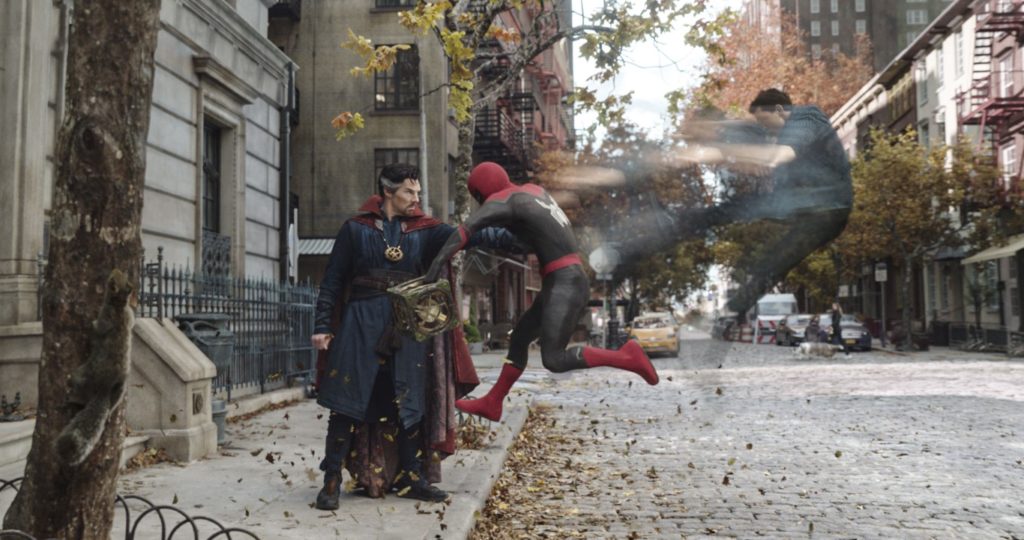
When Doctor Strange tries to help Peter, though, things naturally go awry. Peter asks for the world to forget he’s Spider-Man, but keeps trying to add exceptions so as not to lose his loved ones from that circle of trust. The last-minute requests disrupt the magicks involved. And while Strange is able to contain the botched spell, it accidentally draws in Spidey’s foes from other corners of the multiverse, a tantalizing set up for fans who’ve been watching the wall-crawler in action since 2002.
That’s right! Dr. Octopus (Alfred Molina), The Green Goblin (Willem Dafoe), The Lizard (Rhys Ifans), Sandman (Thomas Haden Church), and Electro (Jamie Foxx) all burst into the MCU after the events of the original Sam Raimi spider-trilogy and Marc Webb Amazing Spider-Man duology. It is an absolute treat for supporters who’ve followed the Web-Head’s cinematic trials and travails over the years.
None of the performers has lost a step. Many even manage to improve on their original outings. And watching them bounce off one another, not to mention a different hero than “their” Spider-Man, has all the crossover glee that audacious comic book stories can deliver. Peter, for his part, is tasked by Strange with rounding up all these interlopers, so they can be returned to their proper universes.
The interactions that ensue are uproarious. The baddies poke fun at one another and the eccentricities of their differing plots and universes. At one point, the film turns into the world’s wildest sitcom, with four supervillains and a host of their helpers playing temporary roommates in a bachelor pad. As in all of Watts’ films, the banter here is consistently on point. The movie does lose a bit of momentum in its “Four Men and a Spidey” section. But watching Peter casually go back and forth with this collection of villains remains a consistent boon, one which helps ground the film despite its timeline-tripping events.
There’s a catch though. Peter soon discovers that beyond their individual problems, each of these baddies was pulled from their worlds on the cusp of perishing, so sending them back would be a death sentence. Strange is unmoved, but Aunt May pushes her nephew to give all of them the help they need. When push comes to shove, Peter can’t sit idly by and send these poor men to their dooms, even if it means another thrilling, fractal-freighted fight with “Stephen” to secure the time and space to heal his erstwhile enemies.
The twist is fabulous. The only thing cooler than Spider-Man fighting a multi-dimensional version of the Sinister Six is Spider-Man trying to save these villains, who came to bad ends in the films that spawned them. His mission is true to the very essence of the character, as someone who understands his responsibility not merely to protect the city or halt evil in its tracks, but to try to show compassion and decency to all those who need it.
That choice is a wonderful affirmation of the principles that have undergirded Spider-Man from the beginning. This challenge cannot be overcome with a simple smashfest. Instead, it requires purer motives, more unique strategies, and deeper psychological challenges for Peter Parker than even he realizes.
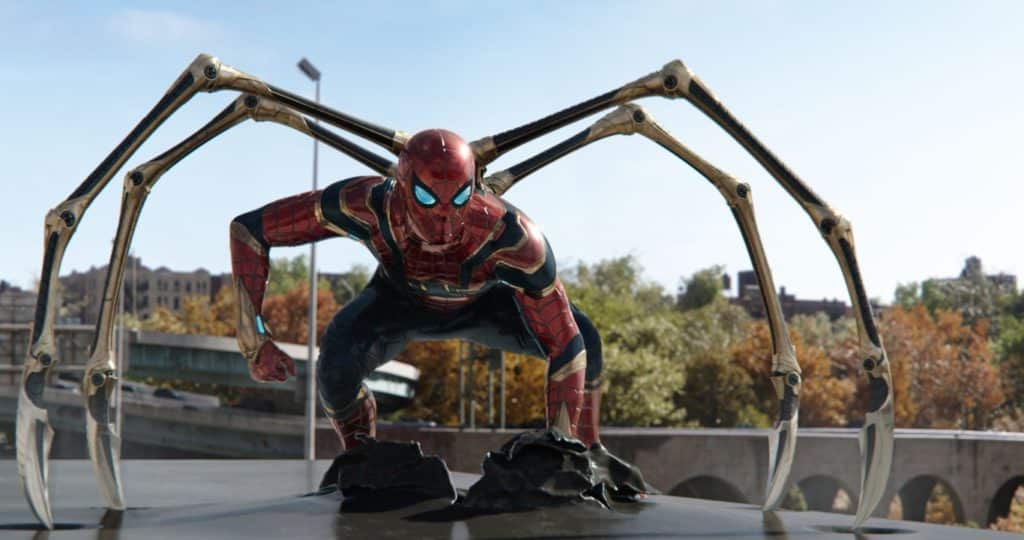
It’s just as wonderful that the push toward kindness, and the dire warning against a “not my problem” line of thinking, comes from none other than Aunt May. Peter tries so hard to help these people, refusing to take the easy way out, and it’s almost entirely due to her shining influence. Unfortunately, it comes at the cost of her life.
The most brutal gut-punch in the film comes after the avuncular, seemingly reformed Norman Osborn turns out to have been under the thumb of his malevolent alter ego the whole time. At the moment of truth, he reveals his true intentions, powers up, and goes on the attack. It’s a hell of a turn, sold by Dafoe’s convincing performance as a penitent Norman to that point.
Even though the ensuing super-fight between him and Spider-Man is a fairly generic building-buckler, the threat to Aunt May, and her eventual death at the Goblin’s hands, gives it meaning apart from the fireworks. She dies affirming what she stands for, what she wants her nephew to stand for, even in the face of the greatest hardships.
In that, the cleverest choice in all of No Way Home turns out to be putting Aunt May into the traditional “Uncle Ben” role. The MCU spider-flicks have conspicuously avoided Peter’s overplayed origin story to this point. There are no scenes of spider bites, no uncle’s last words, nothing more than initials on a suitcase to suggest this standard part of the character’s mythos is even a factor in this universe.
In one fell swoop, though, No Way Home fills that gap with flying colors. The audience knows Tomei’s version of Aunt May. We’ve watched her guide and care for Peter through multiple films. So when she’s the one who urges him to do good even when he’s inclined to look the other way, when she’s the one who tells him that with great power comes responsibility, when she’s the one who dies because of her nephew’s choices, it has more impact than any other cinematic depiction of Peter losing his mentor and inspiration.
The sharp, clockwork choice gives Tomei’s May a hallowed place in the Spider-Man pantheon. And in one painful, poetic loss, it brings this Peter Parker in line with his predecessors, to devastating effect.
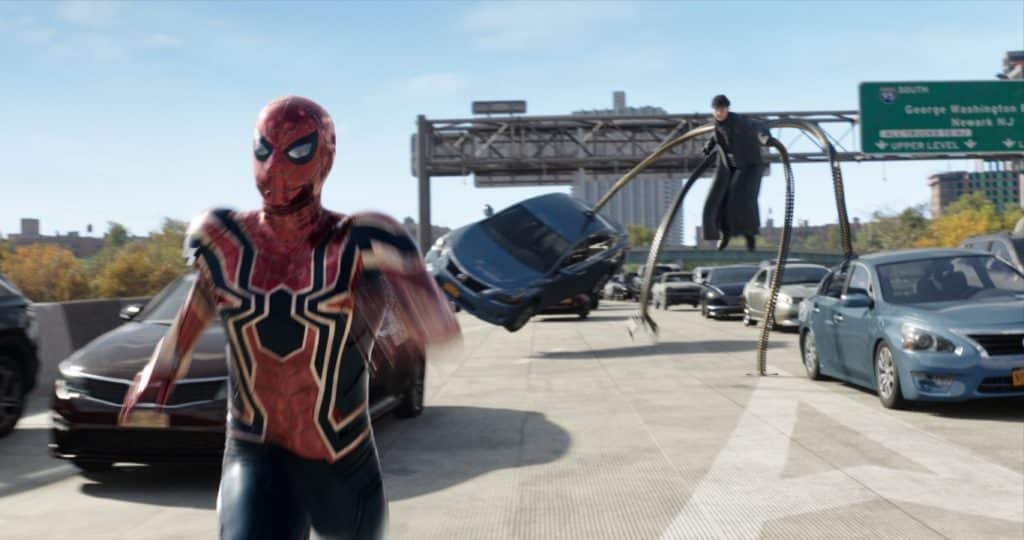
This timing of this moment also speaks to the canny construction of No Way Home’s script, penned by Chris McKenna and Erik Sommers. Spider-Man reaches his lowest point, as all heroes seemingly must, when the two-thirds mark of their movies arrives. He tried his best, to help his friends, to save the bad guys, to put everything on the line for the greater good. But doesn’t just fail in the attempt; he loses the most important person in the world to him.
So who can lift him from this funk? Who can give him the wisdom and insight to go on? Two more Spider-Men, of course! McKenna and Sommers smartly ensure that the bulk of No Way Home belongs to Holland’s wall-crawler. Sure, the dimension-hopping villains come out to play early, with ample references to past adventures. But they’re all this Peter’s responsibility and his cross to bear for most of the runtime. Only when he needs them most do the prior Web-Heads, played by Andrew Garfield and Tobey Maguire, show up.
And they’re utterly fantastic! The script deftly introduces them apart from Holland’s version of Peter, giving audiences a chance to reorient themselves to the old characters and have a few laughs before it comes time to cross the streams. Their arrivals make for such cheer-worthy moments. Each returning Spider-Man feels true to who they were when we left them, and both have such amusing interactions with M.J. and Ned, as Peter’s friends try to piece this strangeness together.
But when push comes to shove, they seek out this universe’s Spidey at a time when he’s lost and ready to give up. His friends can give him comfort, but his alternate universe counterparts can give him perspective. The other Spider-Men commiserate and speak poignantly of their losses, recounting Uncle Ben and Gwen Stacey’s untimely ends. They tell Holland’s Spidey how those deaths led them down the wrong path, to places and choices they ended up regretting. Most of all, they explain why they want better for him. It’s the sort of comfort only a fellow Spider-Man could provide, resonant words and hard-won truths that stretch across their experiences and lift all of them out of the darkness.
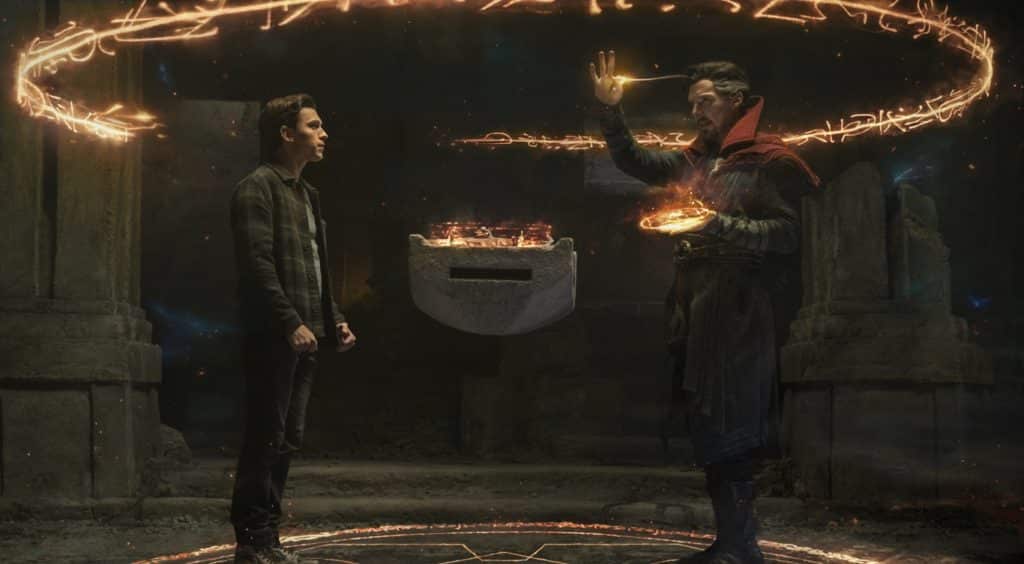
Herein lies No Way Home’s arguably greatest achievement. It would be so easy to do less than this. It would be so easy to have Maguire and Garfield simply swing in for a cameo, or leap into the fray at the very end for the usual “save the world” reasons, and expect audiences to cheer based on recognition alone. But this film not only chooses to build on the hallowed stories and character growth these figures have already experienced, but uses their histories to inspire, warn, and comfort the latest Spider-Man in his darkest hour.
It works! The pep-talk gives the MCU’s Spidey the motivation he needs to soldier on. He, his friends, and his new arachnid allies resolve to work together and cure the remaining villains. What follows is absolutely delightful.
The “Interdimensional Council of Peters” team-up provides something I had no idea we needed. At one point, Garfield’s character remarks that he’d always wanted brothers, and it’s the perfect way to describe the dynamic among the various Spider-Men. There’s a sweetness, an ease and sense of familiarity, and a source of mutual support between them which seamlessly snaps into place. A Spider-Verse team-up could thrive on novelty alone, but these three Peter Parkers make sense together in a way you don’t necessarily expect, and yet which proves to be the most endearing part of the film.
It’s also the most hilarious. The rapport of the various Web-Heads is outstanding on its own terms, leading to a host of great lines and chummy interactions. But the film also pokes fun at the differences and eccentricities of the various movies cross-pollinating. Holland and Garfield’s characters marvel at Maguire’s organic web-shooters. Ned blanches when he learns the fate of another Spider-Man’s best friend. A call to “Peter Parker” elicits three bemusing, simultaneous responses.
There are even some delightful meta-gags here. Garfield’s Peter Parker laments feeling like a lesser Spider-Man, only to be reassured by his spider-sibling that he’s “amazing.” If that weren’t enough, Maguire’s Web-Head once again complains in-universe about his wall-crawling back pain. These are the sorts of little touches and fun in-jokes that ably build on the film’s continuity collision and play off the popular commentary on the spider-franchise.
Of course, it can’t all be fun and games. The group must still work together to lure, battle, and ultimately cure a quartet of baddies, each of whom earns a moment in the sun. The way No Way Home manages to integrate so much, from both within and without the film, is a remarkable achievement.
It all comes together at the Statue of Liberty (remodeled to include Captain America’s shield). Lady Liberty makes for a good home base for the climactic final set-piece. And the ensuing multiball skirmish among the Spider-Men and supervillains finds a convincing way to give the MCU’s Peter an edge despite his comparative youth — unlike the other Spideys, he knows how to work as part of a team.
The bombastic battle that follows is fun if occasionally confounding, given the number of similarly-dressed heroes and the blur of villains smattered across an indifferent array of scaffolding. It mainly succeeds, though, thanks to the continually-entertaining dynamic of the different Peter Parkers working together, while the villains each receive their grace notes.
The CGI Lizard from The Amazing Spider-Man remains a hideous design and undercooked character. But this version of Curt Connors does make a valid point to Peter about the difficulty in trying to fix people, one backed by his own personal history. He even enjoys a post-cure moment of recognition with his own Peter. Likewise, Sandman doesn’t have much in the way of a character arc here, but his desire to return to his family abides and his swirling particle effects impress as much now as they did in 2007.
It’s Electro, however, who comes out the best for his transition from one film series to another. The handwave of this universe’s “different energy” magically makes him into a much better (and better-looking) character, something the script wryly comments on. Sporting a modern, but more traditional design, Jamie Foxx finally gets to have some real fun in the role, showing the potential his casting had back in 2014, even if he’s effectively playing an entirely different person now.
After a brief head-fake, he’s stopped by none other than Doc Ock, the only villain MCU Spidey managed to fix earlier in the picture. It’s a wonderful miniature fake-out. Alfred Molina, who fared the best of any of his counterparts in his original film, continues to soar in the role. His arrival to help save the day, rather than join his villainous counterparts, is an excellent, low-key tribute to the notion that not all of Peter’s good deeds lead to punishment. Some of them return tenfold right when he needs them.
Now Way Home’s treatment of these villains speaks to how well and how often the movie gets both the big and little things correct. So many of its choices don’t merely delight us; they feel right, despite the challenges of displacing and remixing so many stories and characters.
For instance, the energy-focused Electro is naturally drawn to one of Iron Man’s arc reactors. Dr. Octavius eventually grasps it and declares, “The power of the sun, in the palm of your hand,” recognizing it as what he’d hoped to achieve in Spider-Man 2. He and Maguire’s wall-crawler even share a touching moment of reconciliation, where Otto’s moved to see his “dear boy” all grown up.
Our Peter’s allies fare well in smaller arcs too. Ned discovers his grandmother was right; he is, in fact, magic. For her part, M.J. goes from the eternal pessimist, preferring to expect disappointment rather than be blindsided by it, to reassuring her friends that they’ll go forth and kick ass. Even Flash transitions from Peter’s biggest hater to his biggest fan. There’s something worthwhile for everyone here.
What’s more, No Way Home can boast brilliant visual echoes to prior films in the meta-franchise. Maguire’s Web-Head prevents the Green Goblin from being impaled by his own glider, earning a stabbing from the villain for his trouble — a negative image of their final confrontation in the first Spider-Man movie. The poetry of the moment shines. To the same end, Garfield’s Spider-Man (who nearly steals the show both comedically and dramatically) manages to save this universe’s M.J. in the exact way he couldn’t save his universe’s Gwen. It’s an emotional payoff to a seven-year-old movie that still lands like gangbusters, something impressive and affecting.
These moments are emblematic of No Way Home’s remarkable ability to not only invoke past events and characters from the Raimi and Webb films, but to pay them off, round them out, and in some cases even fix them. It extends Peter’s desire to save the lost souls he encounters, and his hard-fought efforts to see the best in them, to a meta level. The film’s curative bent evinces a similar wish in the heart of Watts and his collaborators toward the films that paved their way.
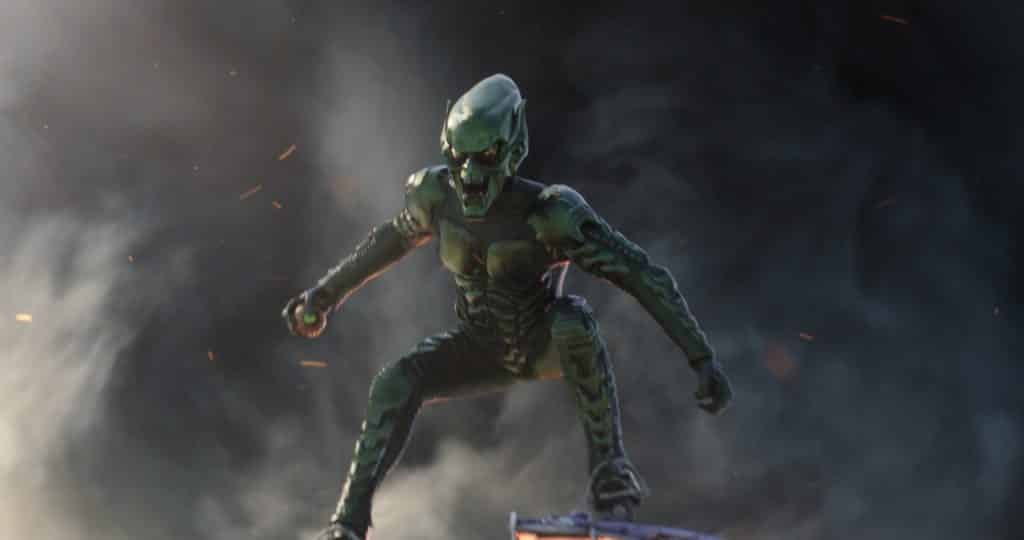
The ultimate challenge, though, comes in the form of the Green Goblin, the original cinematic Spider-Man villain, and the one who’s taken the most from Holland’s Peter Parker. Their fight here is not a physical one, even as Spidey and Gobby do go toe-to-toe once more. Rather, it’s a battle for Peter’s soul. Holland’s Spider-Man must decide whether to exact vengeance upon the miserable bastard who killed his surrogate mother, or to relent, resist his darkest impulses, and strive to fix him too.
It must be said that Dafoe gives a tour de force performance here, rivaling Molina himself and Michael Keaton among Spidey’s silver screen antagonists. He’s entirely plausible as an apologetic Norman desperate to be reformed, warming to this Peter as another surrogate son. And he’s an equal and opposite terror as the Goblin, menacing and insidious in ways that go beyond mere fright, and instead cut to the bone.
He barks at Holland’s Spider-Man that the altruism his aunt preached, the mindset Peter takes up in her honor, is a weakness, a pathology, a threat to everyone he loves. He blames Peter for May’s death, arguing that it was the young man’s compassion, his willingness to help rather than solve the problem by the simplest means necessary, that led to his beloved aunt’s demise. The devil’s words carry extra sting in the shadow of Peter’s lingering sense of guilt over how his “controversies” have seemingly ruined the lives of those close to him.
As a quick shot of a Lego Emperor Palpatine in the aftermath confirms, Osborn is basically demanding that Peter turn to the dark side here. And like the other fresh-faced heroes before him, he manages to stay strong within the light.
He’s not alone though. The other Spideys figure into the finish in ways that are meaningful, without stealing the spotlight. Maguire’s Spider-Man holds back a vengeful Peter from using lethal force on his foe, and Garfield’s wall-crawler tosses him the cure at just the right moment. Despite everything, despite his justified anger and the ease with which he could give into it, Peter instead decides to save and forgive his aunt’s killer, a man who can then only sit and look upon the horrors he’s committed.
There is no greater tribute to the spirit of Spider-Man and the character’s legacy across a multimedia empire. The choice to save someone hateful when you have every reason not to, the decision to vindicate the values of your lost mentor rather than merely avenge them, the move to recognize the humanity even in those who’ve wronged you in profound ways, is a triumph of the character’s abounding heart and compassionate ethos. Peter chooses to do good and do right, when his powers make it easy physically, but his losses make it all but impossible emotionally. That, more than anything, is Spider-Man.
Only he’s not done. The ongoing wrinkles of Doctor Strange’s original spell are tearing reality apart, and the only way to stop it is a counter-spell with a tremendous cost. Everyone must forget Peter Parker. His young love, his best friend, his allies from across the universe, will no longer know him. Despite that price, Holland’s Spider-Man suggests it, chooses it, insists upon it, because he’d rather lose everything to save everyone.
There’s always good reason to be hesitant about uber-magic as the solution to a character’s problems. But there’s an emotional logic that allows the tack to succeed in No Way Home. What matters here isn’t Strange’s spell, which runs into all sorts of logical problems if you start to try to untangle what it would mean in practice. What matters is Peter’s willingness to give up his life, the friendships that have sustained him, the resources and alliances that have supported him, in the name of the greater good.
There’s something profoundly heartening-yet-melancholy in that. In a small way, the Goblin wins, convincing Peter that he is, in fact, a source of hardship to those close to him. Even when he walks into the donut shop where M.J. works, speech in hand, ready to find his way back into her good graces despite the erasure of their shared history, he demurs.
He sees how happy M.J. and Ned are in his absence. He sees the renewed sense of optimism in the young woman he loves, one he cannot bear to disrupt. He is, like so many Spider-Men before him, unwilling to make even people he cares about most a part of his life if it means threatening their happiness and exposing them to his risks.
There too rests the heart of what Spider-Man is about: great sacrifice, immense suffering, long enduring the karmic unfairness of the world, in the name of doing the most good for other people.
With that, No Way Home is one of those miraculous films that takes on so much and yet somehow achieves everything it sets out to do. It tells a compelling story of the MCU’s Spider-Man losing everything and still striving to uphold his aunt’s values. It takes on the chief criticisms of this incarnation of the character — neutralizing his status as an over-resourced, “tech bro” Spidey — and brings him more in line with traditional depictions of the character.
It honors eight films’ and three generations’ worth of stories and characters, integrating them into a seamless whole. It pays off and even fixes dangling threads and broken character arcs from prior outings, offering rousing, cathartic endings for familiar heroes and villains alike. And despite feeling like the culmination of so much, it forges a new origin story for this Spider-Man, one that clears the board for more adventures while still offering a heartening conclusion to the ones of old.
In the end, Peter chooses mercy over vengeance. He chooses tremendous self-sacrifice over personal gain. He finds strength in his closest friends and like-minded counterparts. He saves those even his skeptical elder thinks unsalvageable. He gives up everything, loses all he’s gained, and despite it all, chooses to start again and keep helping those who need him. He decides to keep living up to the responsibilities his powers bring, to carry on the spirit of the lost parent who molded him into the extraordinary person he became. If that’s not Spider-Man, no matter which universe he resides in now, I don’t know what is.